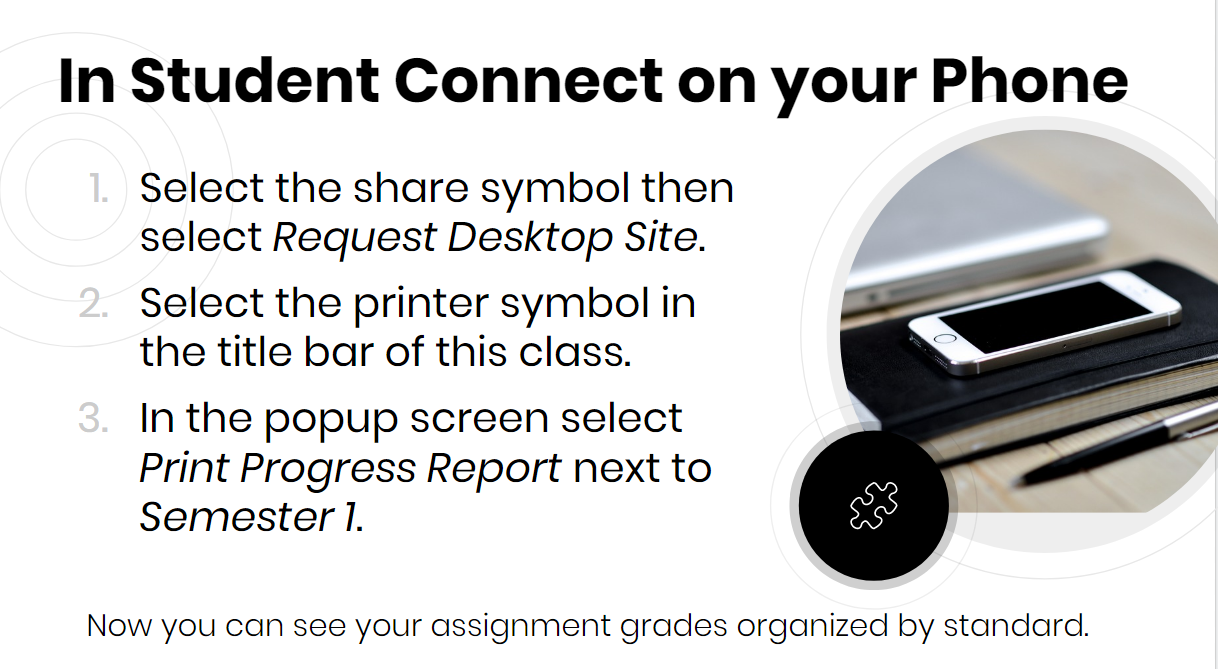 Standards-Based Grading
Standards-Based Grading
Many Dearborn High School teachers and teachers in other Dearborn schools have moved to standards-based grading. The idea of grading based on a set of standards is not new to education and many districts in Michigan and across the country use this method to assess students.
Standards-based grading can seem confusing at first because it’s a shift from the way we usually think about grading in high school. But it’s very much like how students are graded in elementary school.
We truly believe it is a better system of assessing student learning because, most importantly, it’s better for our students.
If you’d like to read more about the shift to equitable grading practices, try this MindShift article by Katrina Schwartz.
We hope that the information below can help clarify some of the confusions that people may have about standards-based grading. Please know that you are always very welcome to email us if you have any additional questions or concerns. (See our contact info in the sidebar.)
Contact
See all of our contact information and social media.
Class Calendar
Need to know what happened in class? Check the class calendar.
Standards-Based Grading for the First and Third Marking Periods
Try not to worry when you see a low grade in Student and Parent Connect for the first and third marking periods. Students are just beginning to learn the skills they will be practicing so scores of 1 and 2 are very normal.
A grade of D or E in the first marking period of each semester doesn’t mean a student isn’t doing well. If you look at the scoring guide below, it just means they are “beginning.”
Please keep in mind that the the first and third marking period grades are only progress report grades and aren’t part of a student’s transcripts. Only the grades at the end of the semesters are the grades that contribute to grade point averages.
The only matter of concern for the first marking period would be individual assignment grades of 0 because that means the student didn’t submit the work or turned in work that had nothing to do with the assignment so we cannot assess it.
So what is standards-based grading?
Standards are simply a list of things that students are supposed to learn in each class. In 11th grade language arts, we have five standards.
Standards-based grading just means students are graded on their attempt to master those standards instead of using an average of all of their work for an entire semester.
In 11th grade language arts, we have five standards. All of the scores in our gradebook will be one of these five categories.
- RHS – Rhetorical Situation
- CLE – Claims & Evidence
- REO – Reasoning & Organization
- STL – Style
- COM – Reading Comprehension
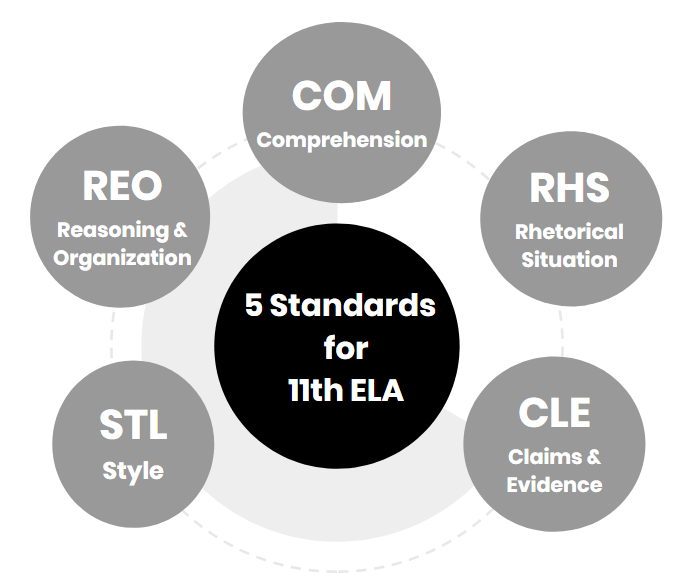
Standards-based grading is better for students for these three reasons:
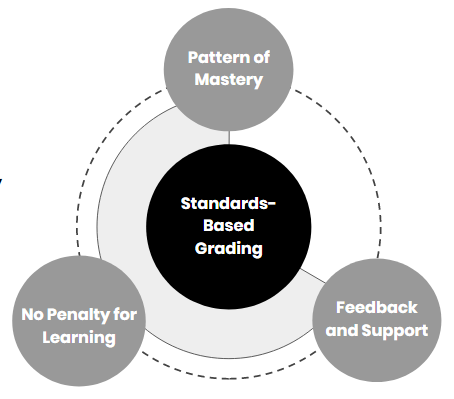
1. No Penalty for Learning
In 11th grade language arts, we only have five standards so we will be learning them and practicing them throughout the semester. As students get better at those five standards, they will see their scores go up and those scores from assignments they did earlier in the semester while they were still learning those skills won’t affect their final score.
2. Pattern of Mastery
As we start to see assignments for each standard in the gradebook, we will determine the student’s pattern of mastery for each standard by looking back from the most recent scores.
For example, in the chart below you can see that Kassem received scores of 2 earlier in the semester when she was still learning this standard but looking at her four most recent scores, she is showing a pattern of 4 so her current score is a 4 for this standard.
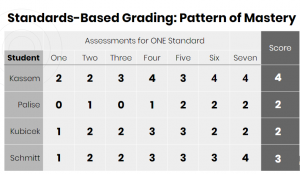
3. Feedback & Support
Our goal is to help students master the standards. We will check their progress for each standard and meet with them to provide support for each standard, and we will repeat this process throughout each semester. (See chart below.)
Even though we are practicing the same five standards, students will be challenged with higher level texts based on their progress.

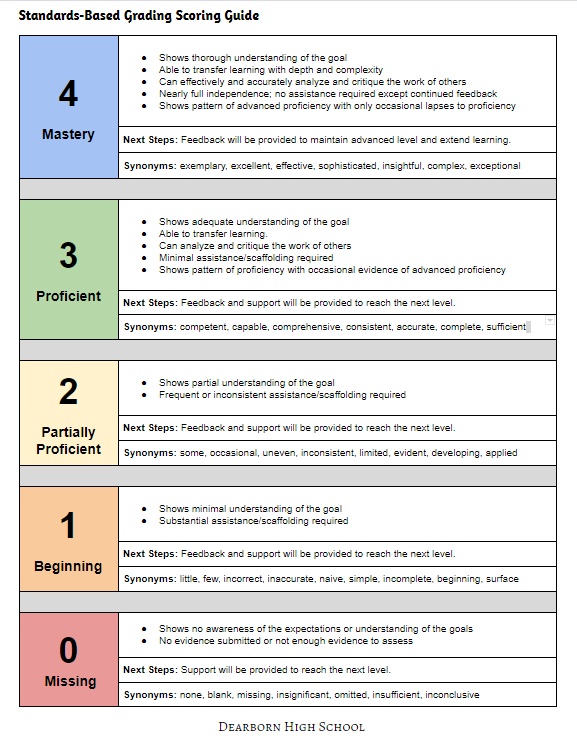
This is our scoring guide for every assessment. You will only see scores of 0 to 4 in Parent Connect and Student Connect for our class.
You’ll notice the big step is between a 2: Partially Proficient and a 3: Proficient. When a student moves from a 2 to 3, it means they have demonstrated that they understand the standard and that they can demonstrate it independently for the most part.
So how does all this translate to a final semester grade?
To receive an A, students need a final score of 4 for three of our five standards and a score of 3 for the remaining two standards.
To receive a B, students need a final score of 3 for four of our five standards and a score of 2 for the remaining standard.
To receive a C, students need a final score of 2 for all five standards.
To receive a D, students need a final score of 2 for three of the standards and a score of 1 for the remaining two standards.
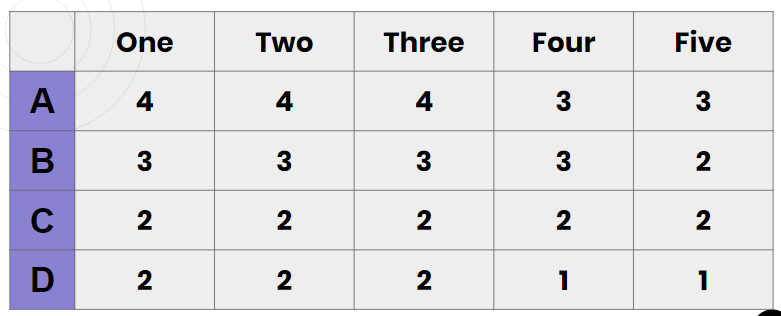
How do I see scores in the gradebook by standard?
Parent Connect and Student Connect are not currently set up in a way that makes it easy to see a student’s scores by the individual standard.
However, it is easy to change your view in Parent or Student Connect on a desktop, tablet, or phone to be able to see all of the scores arranged by individual standard.
These directions work for either Student Connect or Parent Connect.
